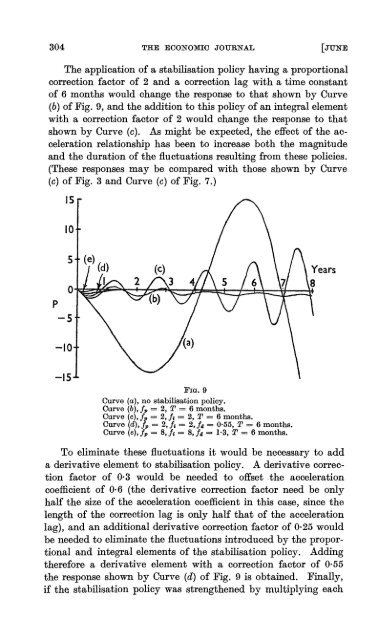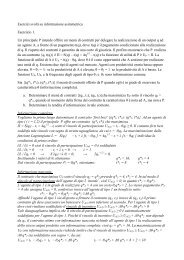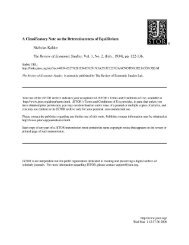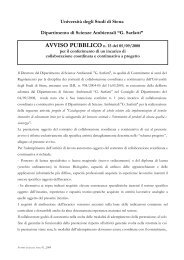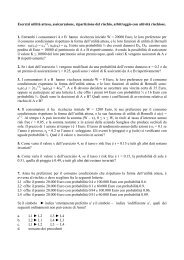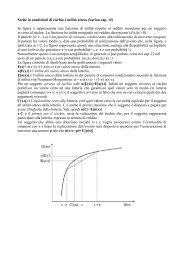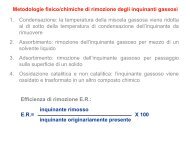Stabilisation Policy in a Closed Economy Author(s): A. W. Phillips ...
Stabilisation Policy in a Closed Economy Author(s): A. W. Phillips ...
Stabilisation Policy in a Closed Economy Author(s): A. W. Phillips ...
You also want an ePaper? Increase the reach of your titles
YUMPU automatically turns print PDFs into web optimized ePapers that Google loves.
304 THE ECONOMIC JOURNAL [JINE<br />
The application of a stabilisation policy hav<strong>in</strong>g a proportional<br />
correction factor of 2 and a correction lag with a time constant<br />
of 6 months would change the response to that shown by Curve<br />
(b) of Fig. 9, and the addition to this policy of an <strong>in</strong>tegral element<br />
with a correction factor of 2 would change the response to that<br />
shown by Curve (c). As might be expected, the effect of the ac-<br />
celeration relationship has been to <strong>in</strong>crease both the magnitude<br />
and the duration of the fluctuations result<strong>in</strong>g from these policies.<br />
(These responses may be compared with those shown by Curve<br />
(c) of Fig. 3 and Curve (c) of Fig. 7.)<br />
Is<br />
P 4<br />
FIG. 9<br />
Curve (a), no stabilisation policy.<br />
Curve (b), fp = 2, T = 6 months.<br />
Curve (c), fp = 2,fs = 2, T = 6 months.<br />
Curve (d), fp = 2, = 2, fd O055, T = 6 months.<br />
Curve (e), f = 8,fs = 8,fd =d 13, T = 6 months.<br />
To elim<strong>in</strong>ate these fluctuations it would be necessary to add<br />
a derivative element to stabilisation policy. A derivative correc-<br />
tion factor of 0-3 would be needed to offset the acceleration<br />
coefficient of 0-6 (the derivative correction factor need be only<br />
half the size of the acceleration coefficient <strong>in</strong> this case, s<strong>in</strong>ce the<br />
length of the correction lag is only half that of the acceleration<br />
lag), and an additional derivative correction factor of 0*25 would<br />
be needed to elim<strong>in</strong>ate the fluctuations <strong>in</strong>troduced by the propor-<br />
tional and <strong>in</strong>tegral elements of the stabilisation policy. Add<strong>in</strong>g<br />
therefore a derivative element with a correction factor of 0.55<br />
the response shown by Curve (d) of Fig. 9 is obta<strong>in</strong>ed. F<strong>in</strong>ally,<br />
if the stabilisation policy was strengthened by multiply<strong>in</strong>g each


